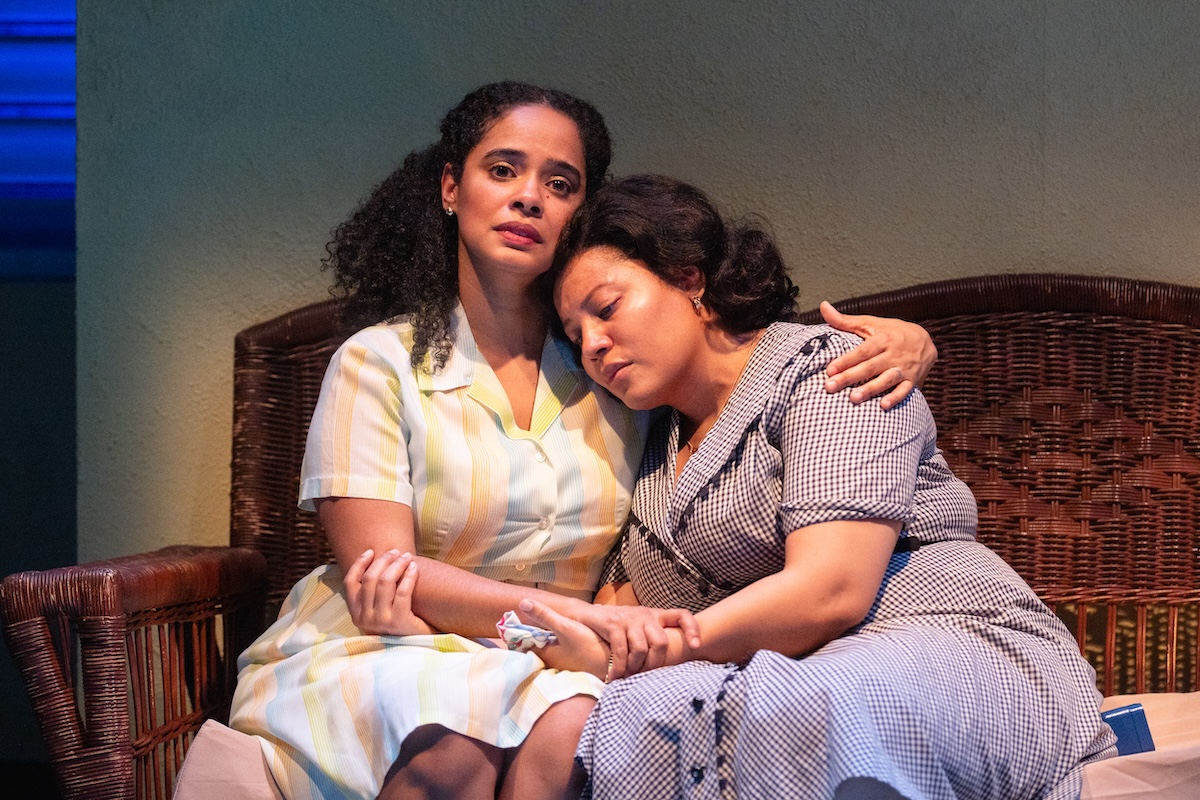The Runner Stumbles

in The Runner Stumbles
(© Matilda.Szydagis)
Sometimes it feels that the same handful of plays, however great, get revived ad nauseam. For that reason and many others, Retro Productions’ new mounting of Milan Stitt’s drama,
The Runner Stumbles, now at ArcLight Theatre, is a welcome addition to the current theatrical landscape.
Part courtroom drama and part forbidden love story, the play is a searing indictment on the dogma of organized religion, but never criticizes or questions the existence of God. It’s a bit of a whodunit without being a slave to plot points. Stitt writes with an expansive nuance that lets us wrestle with the meaning rather than having it spoon-fed.
The piece opens with Father Rivard (Christopher Patrick Mullen) in a tiny jail cell awaiting his trial for murdering Sister Rita (Casandera M.J. Lollar), a young nun from his parish. The following scenes flash forward to his trial and back to the first time the two meet. She’s nervous about coming to a new parish. He reassures her. They share an innocent connection that grows despite Rivard’s attempts to repress his feelings.
Director Peter Zinn artfully navigates the time shifts, framing each one distinctively onstage. The courtroom occupies a wide sliver at the tip of the stage, putting us directly into the action, while Rivard’s office is set back upstage and his jail cell takes a spot downstage right ominously lit by lightning designer Jacqueline Reid.
Jack and Rebecca Cunningham’s artful yet utilitarian wooden set, anchored by a giant crucifixion that hangs eerily above the stage, reflects both the early 1900’s puritanical period and the small town in Michigan where Stitt’s story (and the real-life murder it was inspired by) is set.
Much of the play’s tension comes from the sexual frustrations of Rivard and Rita as they try to suppress what they feel in order to uphold what they believe. Stitt’s dialogue can be clunky at times, but his characters’ deep and conflicting impulses keep the action lively.
Mullen and Lollar both give charged performances woven with intricate subtleties. Mullen punctuates Rivard’s gentle nature with outbursts at Lollar that cause audible gasps from the audience. His sexual and violent impulses become so intertwined that they’re hard to distinguish. In a particularly chilling scene, he cuts his hand and then smears blood on her cheek to chase her away, but the way she looks at him signals she’s coming back.











